Avenue de Clichy, at Five in the Afternoon - Louis Anquetin
A Parisian street life about stained glass, ukiyo-e and Van Gogh.
Montmartre, once a rural village on the outskirts of Paris and now one of the city's most touristic neighborhoods, used to be a magnet for painters during the Impressionist period. Attracted by affordable apartments and the location on a hill above the smoke of the city, painters such as Renoir, Monet, Van Gogh, flocked to Montmartre to enjoy its great natural light for painting and its vibrant bohemian atmosphere.
Amid this excitement, fueled by the concentration of artists and writers, new ideas were vividly discussed in cafés and cabarets. this creative breeding gave rise to one of the many movements of Post-Impressionism: Cloisonnism.

Cloisonnism
The term “Cloisonnism” was coined by art critic Edouard Dujardin as soon as March 1888, whereas the first “cloisonnist” paintings appeared less than a year before.
Developed by Louis Anquetin and Émile Bernard, Cloisonnism emerged as a reaction to Impressionism's focus on depicting light effects (as it peaked slightly later in Monet's ‘Rouen Cathedral’ series). The artists were seeking to create more expressive works by adopting a different style.
The term is derived from an ancient technique for decorating metalwork (and later enamel objects) that involved outlining patterns with a thin metal strip welded to the base. The cells thus obtained are filled with colored enamel. Cloisonnism is thus characterized by the dark outlines enclosing colorful areas, remaining this ancient technique, as well as stained glass.
However, there was more than one source of inspiration. Following the opening of Japan to the West by Commodore Perry in 1853, ukiyo-e prints began to be sold in Paris during the 1860s, significantly influencing Western art, particularly in France.
“Four years were enough for Japan to attract all the artistic clientele of Paris”
Emile Zola, The Ladies’ Paradise (Au Bonheur des Dames), 1883
The style, particularly striking in another of Anquetin's paintings, evokes medieval stained glass windows, but with a shift in subject matter: from religious scenes and the glorification of saints to urban landscapes and the celebration of women's beauty.
The Composition
Returning to Anquetin's masterpiece ‘Avenue de Clichy, at five in the afternoon’, Anquetin’s masterpiece, we see the crowded scenes typical of Japanese prints, with a cropped woman at the lower-right corner, and dark outlines enclosing silhouettes and buildings.
The painting features a butcher shop on the left, and we recognize the intersection known as “La Fourche” (“The Fork”) where Avenue de Clichy and Avenue de Saint-Ouen meet. It is (still today) a crowded and animated district close to Montmartre where Anquetin lived at the time.
The painting should be praised not only for its “cloisonnist” innovation, but also for its well-thought stylistic elements. The limited color palette, consisting mainly of stark blues, captures the time of day when the sun has already set and highlights the work done with light. Anquetin used contrasting light sources - a light yellow from gas burners and a warmer orange from the butcher shop.
The wet sidewalk, which also reflects Paris's typical mid-season weather, adds another atmospheric effect, making the scene even more vibrant.
All these stylistic choices and effects elevate what is, at first glance, a banal end-of-day scene, explaining the painting's enduring influence and impact.
Influence on Van Gogh
Louis Anquetin developed a friendship with Van Gogh in the 1880s when they were both living in the same neighborhood, Montmartre. They both belonged to the same avant-garde circle in Paris, with other artists like Émile Bernard or Henri de Toulouse-Lautrec.
Van Gogh introduced Anquetin to Japanese prints, an influential discovery for him. Van Gogh then left Paris for Arles in February 1888, a few months after his friend painted ‘Avenue de Clichy’.
During his first year in Arles, Van Gogh painted ‘Café Terrace at Night’ (known as the Grand Café du Forum):
The scene from Avenue de Clichy may have inspired Van Gogh. Several elements from Anquetin's composition, such as the shop, the yellow-orange glow of the gaslight on the left, the wet ground, and the nighttime setting with no black except for the outlines, appear in Van Gogh's painting.
In an October 1888 letter to his brother Theo, Van Gogh described his intentions for this painting. He references Paris, possibly as a challenge to himself and an homage to the subject of Anquetin's work:
“I believe that an abundance of gaslight, which, after all, is yellow and orange, intensifies blue, because at night the sky here seems to me, and it’s very funny, darker than in Paris. And if I ever see Paris again, I’ll try to paint effects of gaslight on the boulevard.”
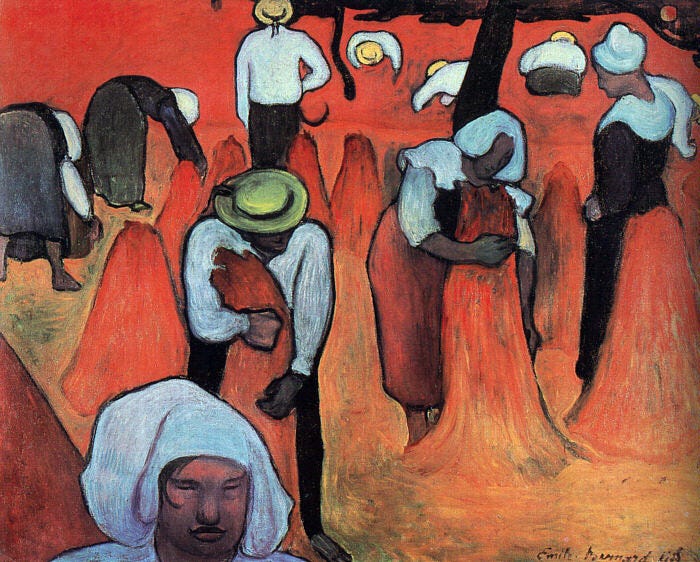
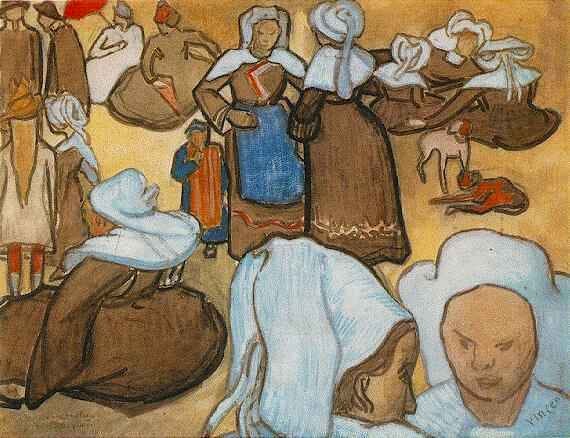
Although the "Cloisonnism" period lasted only a few years after Anquetin's masterpiece, its influence remains significant, especially for the few artists who contributed to the movement and influenced one another. The similarities between their works, as suggested by the two paintings mentioned above, are strong; yet each artist ultimately followed his own path. Louis Anquetin, for example, abandoned the style and returned to more classical works, which have largely been forgotten.


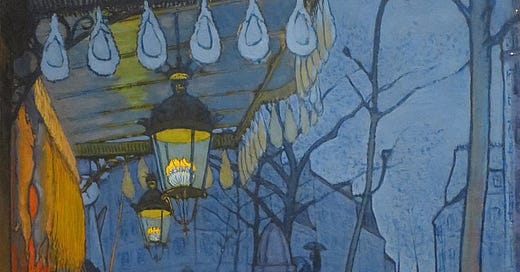

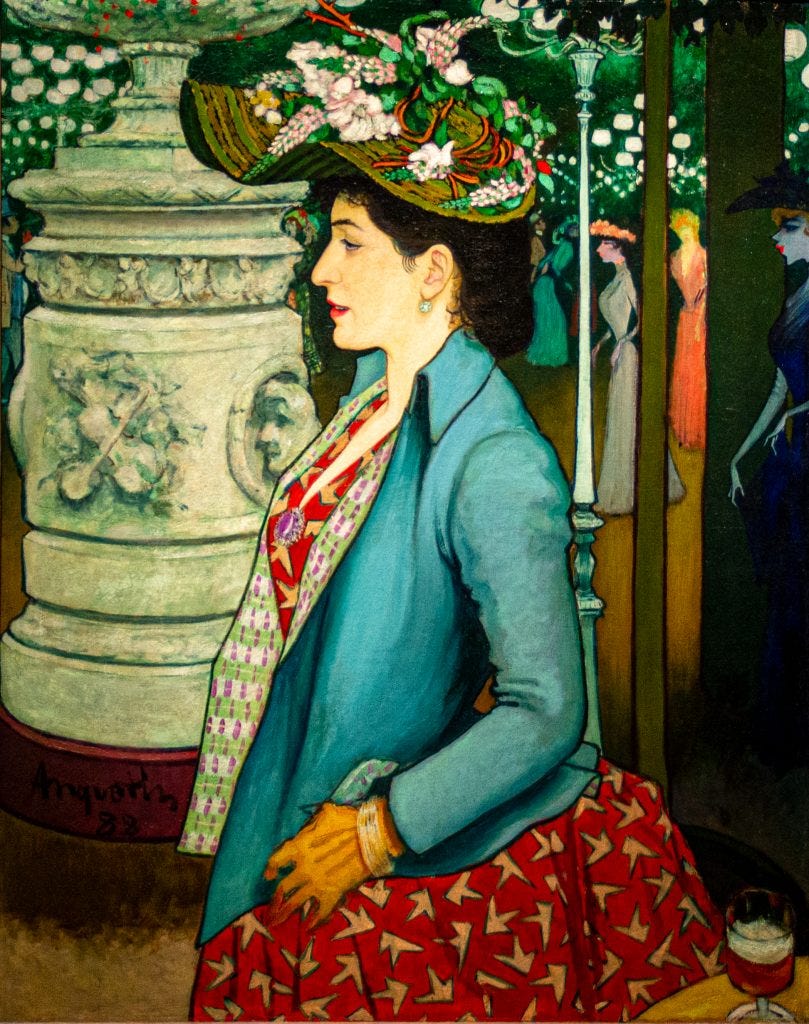
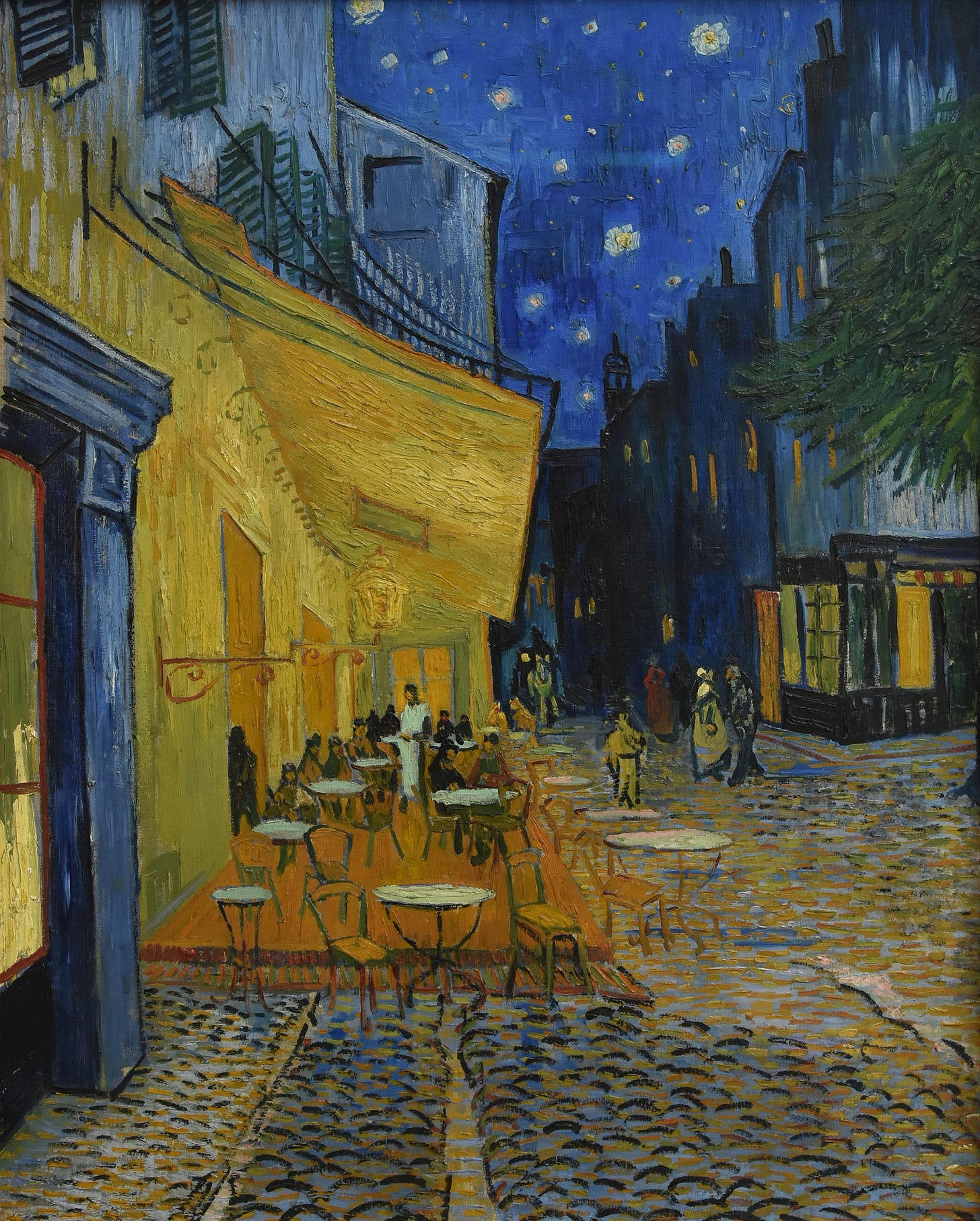

I like the Cloisonné effect and 'Avenue de Clichy' is definitely his masterpiece. But The Elegant Woman is a very strange painting: The face is so lovingly achieved, but her hand looks like an escapee from German expressionism, and those cartoonish women in the background are also completely inappropriate. He seems to have leapt from one style to another, often within a single work, like this one.